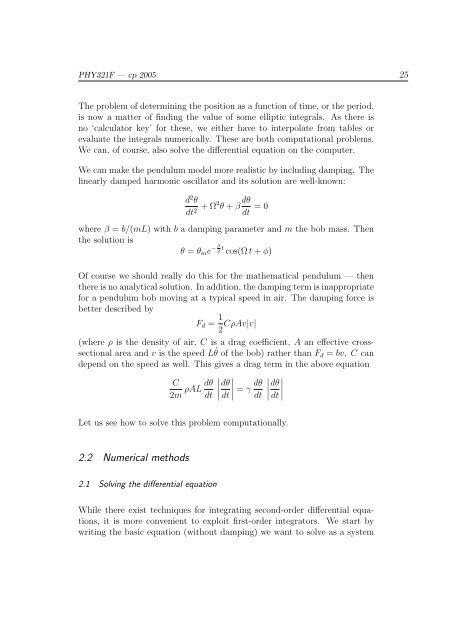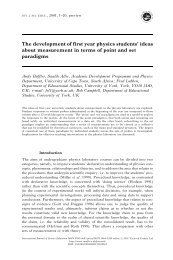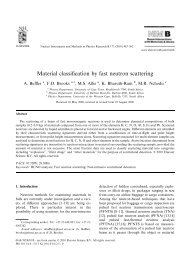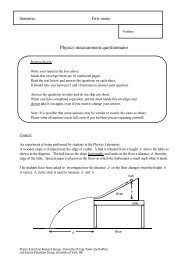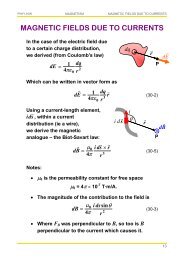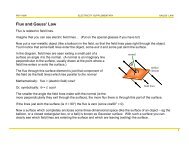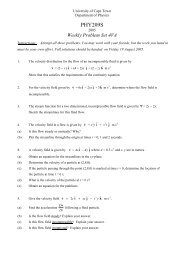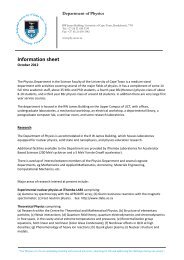You also want an ePaper? Increase the reach of your titles
YUMPU automatically turns print PDFs into web optimized ePapers that Google loves.
PHY321F — cp 2005 25<br />
<strong>The</strong> problem of determining the position as a function of time, or the period,<br />
is now a matter of finding the value of some elliptic integrals. As there is<br />
no ‘calculator key’ for these, we either have to interpolate from tables or<br />
evaluate the integrals numerically. <strong>The</strong>se are both computational problems.<br />
We can, of course, also solve the differential equation on the computer.<br />
We can make the <strong>pendulum</strong> model more realistic by including damping. <strong>The</strong><br />
linearly damped harmonic oscillator and its solution are well-known:<br />
d 2 θ<br />
dt + 2 Ω2 θ + β dθ<br />
dt = 0<br />
where β = b/(mL) with b a damping parameter and m the bob mass. <strong>The</strong>n<br />
the solution is<br />
θ = θ m e − β 2 t cos(Ω t + φ)<br />
Of course we should really do this for the mathematical <strong>pendulum</strong> — then<br />
there is no analytical solution. In addition, the damping term is inappropriate<br />
for a <strong>pendulum</strong> bob moving at a typical speed in air. <strong>The</strong> damping force is<br />
better described by<br />
F d = 1 2 CρAv|v|<br />
(where ρ is the density of air, C is a drag coefficient, A an effective crosssectional<br />
area and v is the speed L ˙θ of the bob) rather than F d = bv. C can<br />
depend on the speed as well. This gives a drag term in the above equation<br />
C dθ<br />
ρAL<br />
2m dt<br />
dθ<br />
∣ dt ∣ = γ dθ<br />
dθ<br />
dt ∣ dt ∣<br />
Let us see how to solve this problem computationally.<br />
2.2 Numerical methods<br />
2.1 Solving the differential equation<br />
While there exist techniques for integrating second-order differential equations,<br />
it is more convenient to exploit first-order integrators. We start by<br />
writing the basic equation (without damping) we want to solve as a system


